
Carfora, V., Festa, S., Pompili, S., Azzena, I., Scaglioni, G., Lenzi, M., ... & Guidetti, M. (2025). Journal of Applied Social Psychology. Link
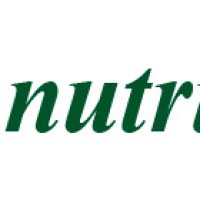
Vezzoli, M., Carfora, V. & Catellani, P. (2025)
Nutrients 2025, 17(5), 928

Piastra, M. & Catellani, P. (2025). Frontiers in Artificial Intelligence, 8, 1484260.
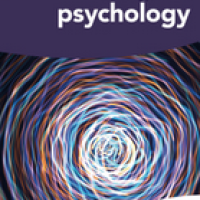
Azzena, I., Festa, S, Pompili, S., Lenzi, M., Carraro, L., Guidetti, M., Cavazza, N., Carfora, V., & Catellani, P. (2025). Cogent Psychology, 12, 2464273.

Bertolotti, M. & Catellani, P. (2025). Journal of Community and Applied Social Psychology, 35, 70058.
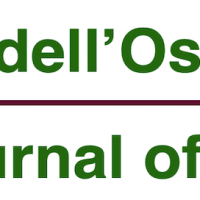
Bertolotti, M., Picciafoco, L., & Catellani, P. (2024). Italian Journal of Electoral Studies, 87, 45-57.
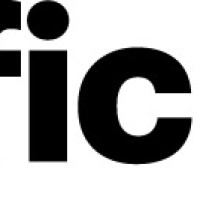
Carfora, V., Buscicchio, G., & Catellani, P. (2024). Proenvironmental self identity as a moderator of psychosocial predictors in the purchase of sustainable clothing. Scientific Reports, 14, 23968.

Bertolotti, M., Catellani, P., & Picciafoco, L. (2024). Comunicazione Politica, 25, 195-218.

Carfora, V., Festa, S., Pompili, S., Azzena, I., Guidetti, M., Scaglioni, G., ... & Catellani, P. (2024)
Sustainability, 16 (15), 6388.
https://www.mdpi.com/2071-1050/16/15/6388

Carfora, V. & Catellani, P. (2024). Journal of Environmental Psychology, 94, 102255.
https://www.sciencedirect.com

Carfora, V. & Catellani, P. (2023). Frontiers in Nutrition, 10, 1204732.
Articolo

Catellani, P., Carfora, V., Biella, M. Brischigiaro, L., Manera, M., Nardone, A., & Piastra M. (2023). Frontiers in Psychology, 14, 1200304.
Articolo
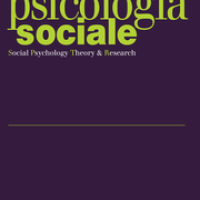
Bertolotti, M., Valla, L.G., & Catellani, P. (2023). Psicologia Sociale, 18 (3), 291-310.
Articolo
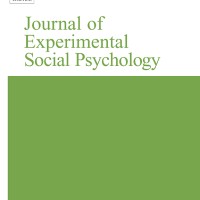
Bertolotti, M. & Catellani, P. (2023). Journal of Experimental Social Psychology. 104, 104404.

Carfora, V., & Catellani, P. (2023). Nutrients, 15(1), 15. Online

Carfora, V., & Catellani, P. (2022). Sustainability, 14(23), 16148. Online

Bertolotti, M., Valla, L. G., & Catellani, P. (2022). Frontiers in Psychology, 13, 1005813. Online

Carfora V., Biella M., & Catellani P. (2022). Frontiers in Psychology, 13, 968109.

Carfora V., Morandi M., & Catellani P. (2022).
Foods, 11, 1268.

Carfora, V., Morandi, M., & Catellani, P. (2022).
Foods, 11, 1454.

Carfora V., Morandi M., & Catellani P. (2022). British Food Journal. 124, 4800-4822.
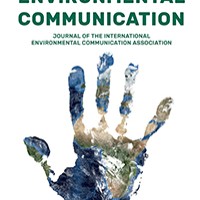
Carfora, V., Zeiske, N., van der Werff, E., Steg, L. & Catellani, P. (2022). Environmental Communication, 16, 900-919.
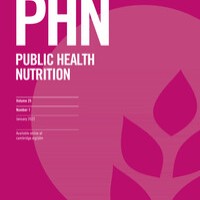
Carfora V., Morandi M., Jelić, A., & Catellani P. (2022). Public Health Nutrition, 25, 2742-2757.

Catellani, P., Carfora, V., & Piastra, M. (2022). Frontiers in Psychology, 13, 825602.

Carfora, V., Buscicchio, G. & Catellani, P. (2021). Sustainability, 13, 10841.
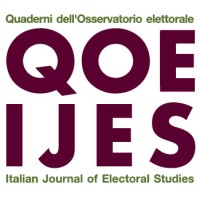
Bertolotti, M., Leone, C. & Catellani, P. (2021). Italian Journal of Electoral Studies, 84, 65-78.

Carfora, V., Jelic, A., Bertolotti, M., & Catellani, P. (2021). In L. Pačić-Turk (Ed.), Brain and mind: Promoting individual and community well-being. Selected proceedings of the 2nd International Scientific Conference. Zagreb, Croatia, Catholic University of Croatia, pp. 197-210.

Wolstenholme, E., Carfora, V., Catellani, P., Poortinga, V. & Whitmarsh, L. (2021). Appetite, 166, 105467.

Carfora, V., Cavallo, C., Catellani, P., Giudice, T.D., & Cicia, G. (2021). Nutrients, 13, 1904.

Catellani, P., Carfora, V., & Piastra (2021). Frontiers in Psychology, 12, 696770.

Carfora, V., Catellani, P. (2021). Frontiers in Psychology, 12, 644050.

Carfora, V., Pastore, M. & Catellani, P. (2021). Frontiers in Psychology, 12, 583209.

Bertolotti, M. & Catellani, P. (2021). Social Cognition, 39, 201–224.

Bertolotti, M., Catellani, P., & Nelson, T. (2021). Environmental Communication, 15, 715-730.

Bertolotti, M. & Catellani, P. (2021). Frontiers in Psychology, 12, 624001.

Catellani, P., Bertolotti, M., Vagni, M., & Pajardi, D. (2021). Applied Cognitive Psychology, 35, 3-17.

Carfora, V., Conner, M., Caso, D., & Catellani, P. (2020). Journal of Applied Social Psychology, 50, 744-755.

Catellani, P., Bertolotti, M., Vagni, M. e Pajardi, D. (in press). Applied Cognitive Psychology.

Carfora, V., Di Massimo, F., Rastelli, R., Catellani, P., & Piastra, M. (2020). Multimedia Tools and Applications, 39, 35949-35971.
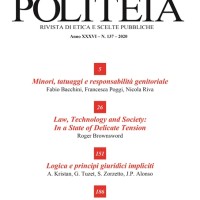
Catellani, P. (2020). Politeia, 36, pp. 139-144.

Bertolotti, M., Carfora, V. & Catellani, P. (2020).
Applied Psychology: Health and Wellbeing, 12, 212-230.

Bertolotti, M., Carfora, V. & Catellani, P. (2020).
Health Communication, 35, 475-482.

Catellani, P. (2019). Echo. Rivista interdisciplinare di comunicazione, 1, 20-27.
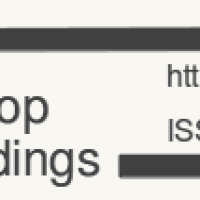
Di Massimo, F., Carfora, V., Catellani, P., & Piastra, M. (2019). CEUR – Workshop Proceedings, 2481, 27.
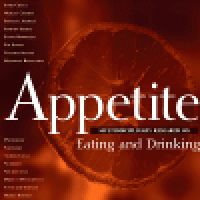
Carfora, V., Bertolotti, M., & Catellani, P. (2019). Appetite, 141,

Carfora, V., Catellani, P., Caso, D., & Conner, M. (2019). Journal of Environmental Psychology, 65,

Bertolotti, M. & Catellani, P. (2018). Social Psychology, 49, 154-167.

Bertolotti, M., Chirchiglia, G. & Catellani, P. (2016).
Promoting change in meat consumption among the elderly: Factual and prefactual framing of health and well-being, Appetite,
106, 37-47.

Bertolotti, M. e Catellani, P. (2016). Ricerche di Psicologia, 39, 79-92.
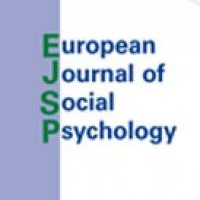
Bertolotti, M. & Catellani, P. (2015).
Agreement with climate change policies: Framing the future and national versus supra-national identity.
European Journal of Social Psychology,
45, 847-857.
Through an experiment included in a nationwide survey conducted prior to the 2014 European elections, we investigated whether citizens’ agreement with policies dealing with the global issue of climate change depends on how such policies are framed and citizens’ identification with the national or supranational entities enacting them. Participants were presented with different versions of a statement proposing investments in renewable energy sources, manipulated in terms of hedonic consequences (benefits of adoption vs adverse effects of non-adoption), regulatory concern (growth vs safety) and policy actor group membership (national vs supranational actor). Participants’ national/supranational identification was also measured. Participants’ agreement with the policy was stronger for congruently framed messages (i.e. messages framed in terms of positive growth-related consequences and negative safety-related consequences) than for incongruently framed messages. The effect of framing was further enhanced when the policy was attributed to a national or supranational actor with whom participants identified.

Catellani, P. & Bertolotti, M. (2014).
European Journal of Social Psychology,
44, 82-92.
Research on counterfactuals (‘If only…’) has seldom considered the effects of counterfactual communication, especially in a defensive context. In three studies, we investigated the effects of counterfactual defences employed by politicians. We assumed that self-focused upward counterfactuals (‘If only I…, the outcome would have been better’) are a form of concession, other-focused upward counterfactuals (‘If only they…, the outcome would have been better’) are a form of excuse, and self-focused downward counterfactuals (‘If only I…, the outcome would have been worse’) are a form of justification. In Study 1, a counterfactual defence led to a more positive evaluation of the politician than a corresponding factual defence. Of the two types of defence, the counterfactual defence reduced the extent to which the politician was held responsible for the past event and was perceived as more convincing. In Study 2, counterfactual excuse and counterfactual justification were equally effective and led to a more positive evaluation of the politician than counterfactual concession. In Study 3, the higher effectiveness of counterfactual justification was independent from perceived ideological similarity with the politician, supporting the strength of this defence. These results show that counterfactual defences provide subtle communication strategies that effectively influence social judgements. Copyright © 2013 John Wiley & Sons, Ltd.
Publisher website

Bertolotti, M. & Catellani, P. (2014).
Effects of message framing in policy communication on climate change.
European Journal of Social Psychology,
44, 474–486.
In two studies, we investigated the framing effects of policy messages regarding climate change. In Study 1, we asked participants to read policy messages that envisioned positive consequences. Messages varied as to their outcome sensitivity (achievement of positive outcomes versus avoidance of negative outcomes), regulatory concern (growth versus safety) and goal-pursuit strategy (investment in renewable energy versus intervention on greenhouse gas emissions). Participants showed the highest agreement with a policy message on renewable energy when it was formulated in terms of the achievement of positive, growth-related outcomes and with a greenhouse gas emissions message when it was formulated in terms of the avoidance of negative, safety-related outcomes. The same held for the intention to vote for candidates proposing those policies. In Study 2, participants’ regulatory focus moderated these effects, with promotion-focused participants preferring messages focused on the achievement of positive outcomes and prevention-focused participants preferring messages focused on the avoidance of negative outcomes. Results show that the fit among the various levels of framing of a policy message regarding climate change, moderated by individual regulatory focus, increases the probability that recipients agree with the policy.

Barisione, M., Catellani, P. & Garzia, D. (2014).
Tra Facebook e i TG. Esposizione mediale e percezione dei leader nella campagna elettorale italiana del 2013.
Comunicazione Politica,
6, 187-210.
Nell’insieme sempre più diversificato di piattaforme che caratterizza la comunicazione politica ed elettorale, la popolarità dei leader può variare in modo diverso a seconda dei canali di informazione politica utilizzati dagli elettori e della maggiore o minore congruenza dello stile comunicativo di un leader con quello di ogni dato medium. A partire dai dati dell’inchiesta ITANES Rolling Cross Section (RCS) condotta via CAWI su 8.700 intervistati nei 40 giorni precedenti il voto del febbraio 2013, questo articolo analizza la struttura e le dinamiche di popolarità di Berlusconi, Bersani, Monti e Grillo, con una particolare enfasi sulle relazioni tra valutazione del leader e tipo di esposizione mediale degli intervistati. I risultati mostrano come persistano forme di ‘media partisanship’ e polarizzazione ideologica in Italia, soprattutto nei canali televisivi Mediaset e nei quotidiani orientati a sinistra. Gli elettori che utilizzano Internet come principale fonte di informazione politica appaiono come i più forti sostenitori dei leader del proprio partito, mentre livelli più elevati di ‘attivismo online’ sono associati a un maggiore interesse per la politica e, quindi, a valutazioni dei leader mediamente più alte. Pur apparendo relativamente politicizzato, chi riceve informazioni elettorali anche via Facebook si caratterizza, al contrario, per un atteggiamento più critico verso tutti i leader politici. Infine, i fruitori abituali di programmi di intrattenimento TV continuano a presentare evidenti atteggiamenti pro-Berlusconi. In conclusione, se le preferenze politiche si strutturano chiaramente per tipo di di esposizione mediale, le loro dinamiche lungo la campagna elettorale appaiono omogenee attraverso i diversi media. Un’analisi finale del caso di Beppe Grillo fornisce una riprova della natura “ibrida” e interconnessa dell’attuale sistema mediale, dove un attore politico può avere...

Catellani, P. (2014).
Introduzione allo special issue su moralità e psicologia sociale: percorsi di ricerca e direzioni future.
In-Mind,
7, 1-2.
I contributi presentati in questo numero di In-Mind offrono un quadro sintetico, ma anche chiaro e aggiornato, delle principali direzioni di ricerca verso le quali si stanno indirizzando gli studi psicosociali sulla moralità. Se già da tempo la moralità è al centro dell’attenzione della psicologia dello sviluppo e del ragionamento, è invece relativamente recente l’interesse della psicologia sociale per questo tema. Interesse che in breve tempo è stato in grado di offrire alcune chiavi di lettura stimolanti. In modi diversi, tutti i contributi mettono in evidenza l’importanza della dimensione della moralità nelle percezioni e nelle scelte delle persone. Mostrano inoltre che, se da un lato la morale è profondamente radicata nell’individuo, dall’altra è profondamente condizionata dalla società. Infine, indicano un serie di percorsi di ricerca che, se sviluppati ulteriormente, possono contribuire in modo significativo a far comprendere appieno le dinamiche di radicamento, ma anche di cambiamento, delle convinzioni e dei comportamenti morali di ciascuno.

Catellani, P. e Bertolotti, M. (2014).
The effects of factual and counterfactual attacks on social judgments.
Social Psychology,
45, 371-381.
Two experiments were conducted to compare the effects of different styles of verbal criticism (factual vs. counterfactual) on the perceptions of target, source, and quality of the attack. Counterfactual attacks resulted in more negative overall judgment of the target and ratings of the target’s morality than either factual attacks or no attack. Counterfactual attacks were also rated more positively than factual attacks, and the source of the counterfactual attack was rated as being less biased against the target. Regression analyses confirmed that the observed effect on overall judgment was mediated by the perceived bias of the source. The greater effectiveness of counterfactual attacks was moderated by awareness of prior hostility of the source of the attack toward the target.
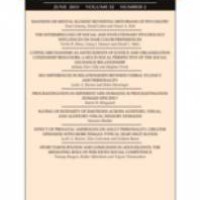
Catellani, P., Milesi, P. e Alberici, A.I. (2014).
Current Psychology,
33, pp. 47-63.
Previous research has shown that counterfactual thinking (“if only…”) is related to event explanation, blame assignment, and future decisions. Using data from a large-scale electoral panel survey (ITANES), we investigated the association between pre-election counterfactual thoughts on the national economy and subsequent voting choice. Results revealed that voters focused counterfactuals on the government and other political or economic actors but also, and more frequently, on unspecified or reified actors. Whereas counterfactuals focused on the government were associated with voting for the challenger, counterfactuals focused on political or economic actors or on reified actors were associated with voting for the incumbent. These associations were even stronger when counterfactuals had a subtractive (“if only X had not…”) rather than an additive (“if only X had…”) structure. The inclusion of the targets of the counterfactuals added significantly to the predictive value of a model of voting choice based on voters’ evaluation of the national economy.
Publisher website
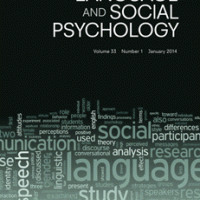
Catellani, P. & Covelli, P. (2013).
Journal of Language and Social Psychology,
32, 495-504.
While counterfactual thinking has been widely investigated, we know much less about how counterfactual (“If . . . then”) statements are employed in political communication. We analysed statements made by politicians during pre-electoral televised broadcasts, to assess whether politicians employ counterfactuals in facework. Counterfactuals were coded according to their direction, controllability, and structure. Log-linear analysis revealed that upward, controllable, and additive counterfactuals were more frequent than downward, uncontrollable, and subtractive counterfactuals, respectively. A significant three-way interaction between target, direction, and controllability also emerged. While politicians more often employed upward controllable counterfactuals when speaking about targets other than themselves, they more often used downward controllable and upward uncontrollable counterfactuals when referring to themselves. These findings advance our knowledge of how counterfactuals are employed by politicians to promote their positive face and aggravate the face of adversaries.
Publisher website

Bertolotti, M., Catellani, P., Douglas, K.M., & Sutton R.M. (2013).
Social Psychology,
44, 117-128.
In two experimental studies (conducted in Britain and Italy), participants read about a politician answering to leadership- versus morality-related allegations using either downward counterfactuals (“things could have been worse, if ...”) or upward counterfactuals (“things could have been better, if ...”). Downward messages increased the perception of the politician’s leadership, while both downward and upward messages increased morality perception. Political sophistication moderated the effect of message direction, with downward messages increasing perceived morality in low sophisticates and upward messages increasing perceived morality in high sophisticates. In the latter group, the acknowledgment of an intent to take responsibility mediated morality judgment. Results were consistent across different countries, highlighting previously unexplored effects of communication on the perception of the “Big Two” dimensions.
Publisher website

Milesi, P. e Catellani, P. (2011).
British Journal of Social Psychology,
50, 690-706.
An intriguing question for scholars of collective action is how participants of unsuccessful actions become re-engaged in future collective activities. At an individual level, previous research has shown that after negative outcomes counterfactual thoughts (‘if only … ’) may serve to prepare for future action. In the current research, we investigated whether counterfactuals may also prepare for future action at a collective level. After a defeat of their party at the regional elections, 163 political activists rated their agreement with abstract (as opposed to concrete) and party-focused (as opposed to other-focused) counterfactuals about how the elections outcome might have been better. Results showed that abstract counterfactuals, dealing with the core elements of the elections, supported collective action intention better than concrete ones. Consistent with the recent developments of dual-pathway models of collective action, counterfactuals predicted collective action intention through the mediation of group efficacy and group identification. In particular, while both party- and other-focused abstract counterfactuals increased group efficacy, only other-focused abstract counterfactuals increased group identification. Discussion focuses on how the investigation of counterfactuals can enlarge our knowledge of the socio-cognitive antecedents of collective action.
Publisher website
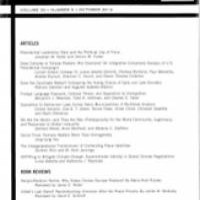
Catellani, P. & Alberici, A.I. (2012).
Political Psychology,
33, 619-634.
Publisher website

Catellani, P. (2010).
Sistemi Intelligenti,
22, 209-220.
W
hen reasoning about judicial cases, people often compare reality with its alternatives, what happened with what could or should have happened. While doing this, they may refer to various types of legal and extra-legal norms. In this paper, I review research results on how people engage in counterfactual reasoning in the judicial context. Some studies have shown that the spontaneous use of counterfactual reasoning may produce a biased decision, leading jurors to focus attention on aspects that are not relevant to the legal evaluation of the case at hand. Other studies, however, have suggested that a more controlled use of counterfactual thinking may reduce reference to legally irrelevant norms. These results suggest that instructions and training programmes aimed at fostering the generation and comparison of several counterfactual alternatives may improve the quality of judicial decision making.
Publisher website

Catellani, P. (2009).
Comunicazione Politica,
1, 75-84.
Some recent developments of psychological research on political communication are discussed. First, a focus on the effi cacy of several features of politicians' verbal and non-verbal communication, such as concreteness versus abstractedness of language employed or gestures. Second, a focus on the use and the effi cacy of defence and attack communicative strategies by politicians and journalists, as well as of strategies aimed at enhancing citizens' identifi cation with given social categories. Finally, an increasing attention for the consequences of pragmatic constraints related to the various contexts in which political communication takes place.
Publisher website

Colombo, F. e Catellani, P. (2006).
Comunicazione Politica,
7, 343-355.
Publisher website

Flecker, J., De Witte, H., Hentges, G., Catellani, P., De Weerdt, Y, e Milesi, P. (2005).
Ethical Perspectives,
12, 141-170.

Catellani, P., Alberici, A.I. e Milesi, P. (2004)
European Journal of Social Psychology,
34, 421-436.
P
ast research has shown that counterfactual thinking (‘if only…’) is related to judgements of responsibility for negative events. It has also shown that behaviours deviating from the target's own behavioural standard (intrapersonal norm) are likely to trigger counterfactuals—the so-called exceptional-routine effect. In the present research, we demonstrate that behaviours deviating from a social category's behavioural standard (social norm) are also likely to trigger counterfactuals—what may be called the nonconformity effect. Two studies investigated counterfactual thinking regarding a rape case, classifying counterfactuals according to their conformity versus nonconformity to relevant social norms, and their focus on actions versus inactions. In Study 1, participants with higher endorsement of the rape victim stereotype generated more counterfactuals on the victim's non-conforming inactions than did participants with lower stereotype endorsement. The presence of a nonconformity effect was confirmed in Study 2, where participants rated their agreement with externally generated counterfactuals. Moreover, in Study 2, counterfactuals focused on the victim's non-conforming inactions predicted responsibility attribution to the victim through the mediating role of perceived avoidability of the event. Copyright © 2004 John Wiley & Sons, Ltd.
Publisher website

 Italiano (IT)
Italiano (IT)  English (UK)
English (UK) 















































